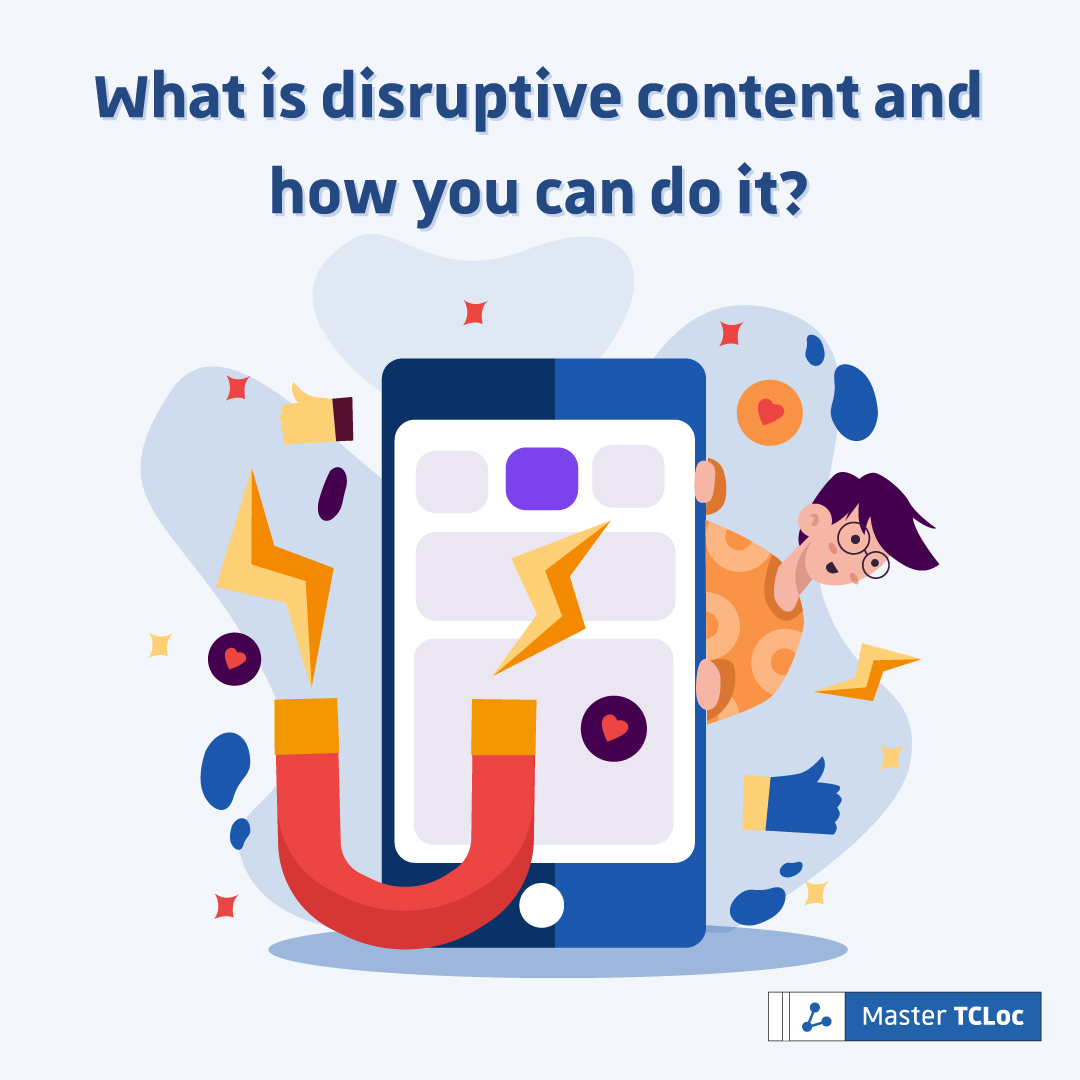Standing out in a very competitive world is hard. Creating engaging and relevant content is hard too. Implementing interactive content in order to initiate the change is obviously a great way to start. But how about bringing up something disruptive? This article will help you understand this essential concept and give insights on how to apply it in your content creation strategy. What does disruption mean?
What does disruption mean?
The word disruption in regards to marketing strategies was first used in the 1990s. It is used to describe how new comers in a market can disrupt established businesses. In other words, daring and audacious start-ups who suddenly shake up the common rules of marketing and targeting, and come with a brand-new product or service, completely out-of-the-box, and reveal an actual and tangible change.
Here are three famous examples of disruption:
- The iPhone: the Steve Jobs company was the first to replace buttons on cell phones with tactile keypads. Today we wouldn’t think of buying a cell phone with actual buttons, right?
- Uber: the creation of the online platform that unite clients and providers of mobility services completely bypassed existing taxi companies.
- Airbnb: the concept is similar to Uber, but concerning private house rental.
- Nespresso: with its unique coffee capsules, Nespresso redefined the art of coffee making and created around it a unique customer experience.
How is disruption different from innovation?
While it is true that innovation is part of disruption, the latter goes much beyond the former. From a study conducted by the Harvard Business School, we learn that innovation creates a better product in an existing market, while disruption generates the creation of a new segment. If we have a look at the above examples, we can confirm that the four companies created not only a new and innovative product, but also a new segment of customers.
If you want to achieve disruption, you will have to reset your way of thinking. But be aware that a real disruption might also mean to redefine your product or service, reshape your communication about it, and even reinvent your whole business model. It could result in a complete makeover!
How can you integrate this concept in content creation?
The gauge of content disruption is engagement. After all, the only reason why you put so much effort in your content creation is to generate engagement, right? For your brand, the audience is everything. Create a real disruption and you will see your engagement skyrocket.
However, creating disruptive content implies taking risks in your marketing strategy to see what fits for your brand. No one can be adamant whether a specific strategy will work or not. There will always be a part of unknown.
While we already know that in content creation less is more, disruptive content goes beyond information, well-written blog posts, or even well-mastered selling techniques. It will engage your customers on a deeper level. Regarding content creation, you will have to challenge your assumptions regarding usual marketing techniques.
Here are three levers to generate disruption:
1. Create a unique and emotional bond with your customers
Once again, the example of the iPhone is relevant. Apple managed to create a sense of belonging and feeling special to the brand since the introduction of the first iPhone. This is why customers still prefer to buy its expensive product rather than another manufacturer’s one. They feel special. They feel unique. They feel belonging to a special community.
2. Make the most out of social media
Starbucks is one of the world’s companies that best manage social media relationship between brand and customers. Its marketers know how to focus their content on their customers and how to interact with them. Starting from a very common product – coffee – they achieved to create around this beverage a unique customer experience. People who go to their shops don’t have a coffee: they have a Starbucks coffee.
3. Don’t think you need an enormous budget to achieve disruption
Does the name Mark Zuckerberg seem familiar to you? The famous founder of Facebook was still a Harvard student when he created the very popular blue-logo platform. Although he had a very limited budget, he was able to launch a disruptive product.
This article is intended to give you food for thought on how your brand can stick out from your competitors. Disruption may be hard, but not impossible. And remember, nothing in neither marketing strategy nor content creation is risk free. It all begins with a little step … off-road.



